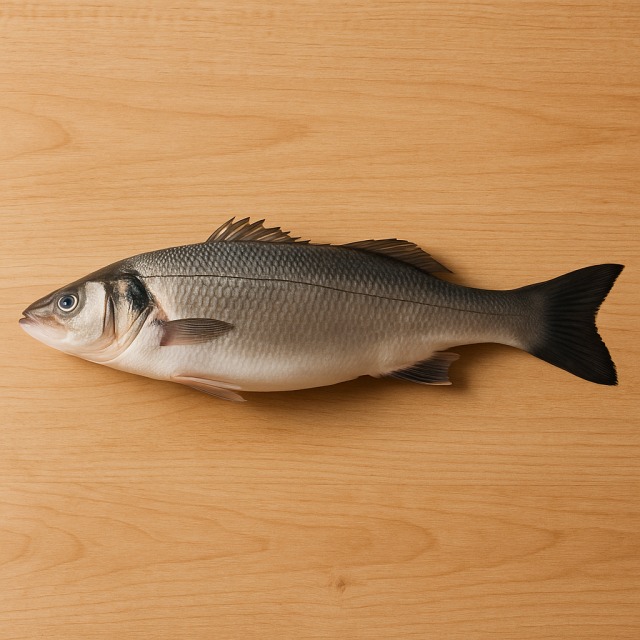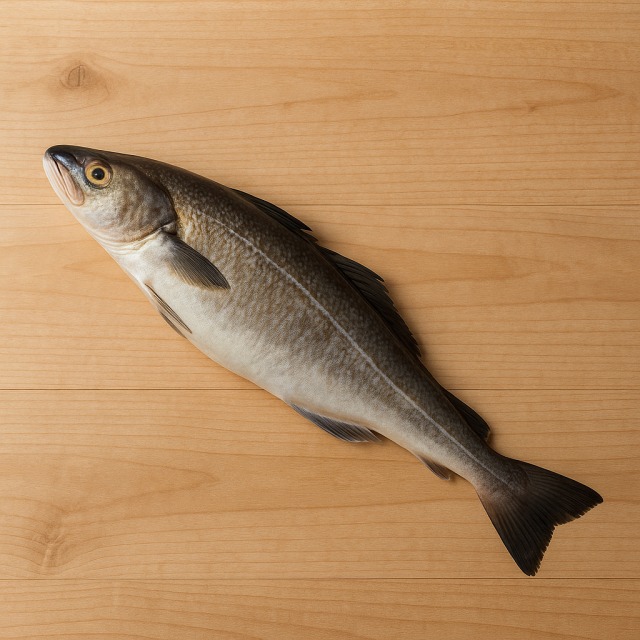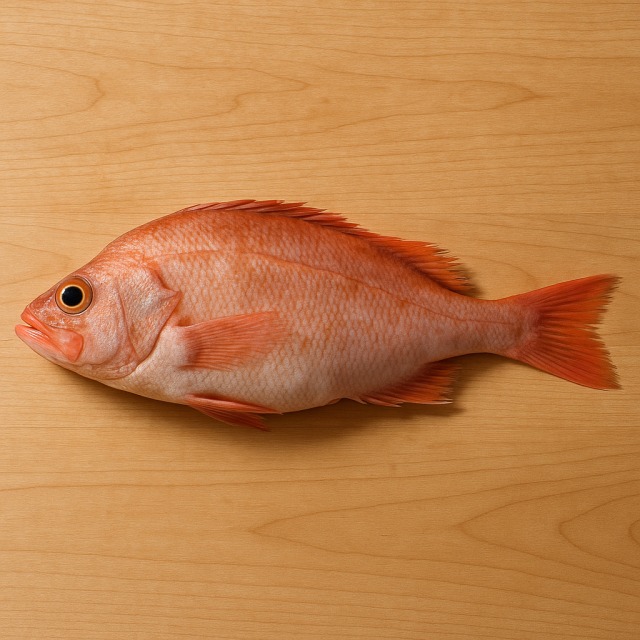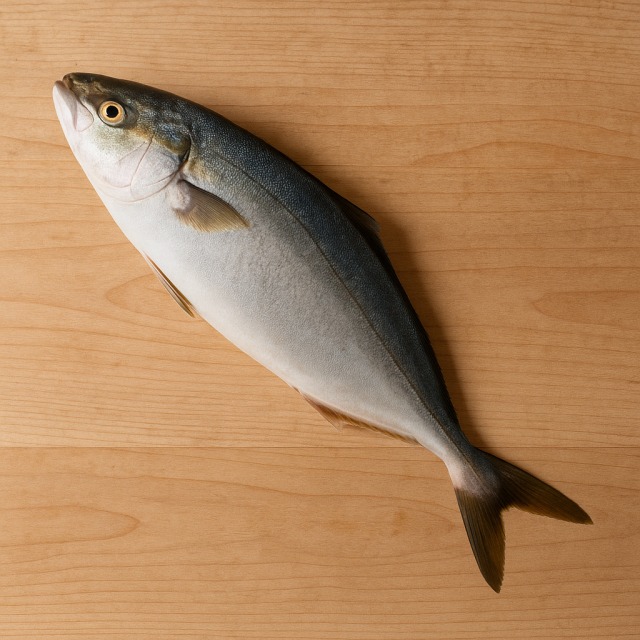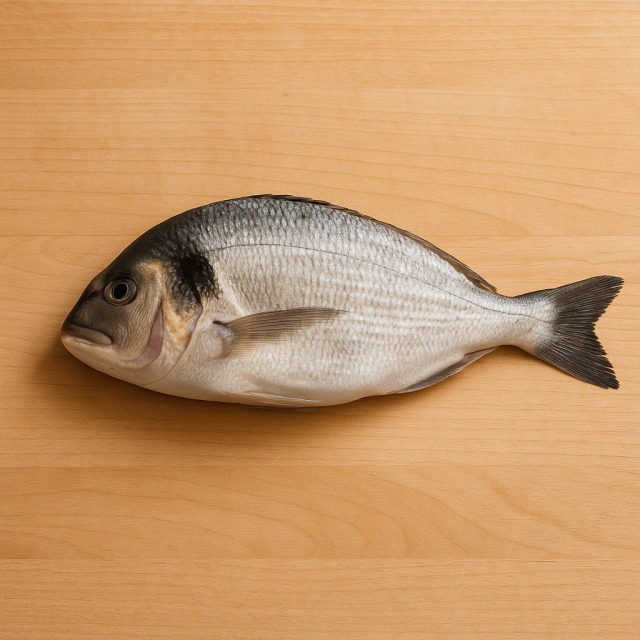Calorie Chart / Fish / Coley Hake
How Many Calories Are in Coley and hake?
Calculation of the nutritional value & Recommended Dietary Intake of coley and hake
For g and a calorie requirement of kcal
| Calories 126 kcal | Proteins 26 g | Lipids 2.3 g | Carbohydrates 0 g |
| 6% | 35% | 3% | 0% |
Health benefits of coley and hake
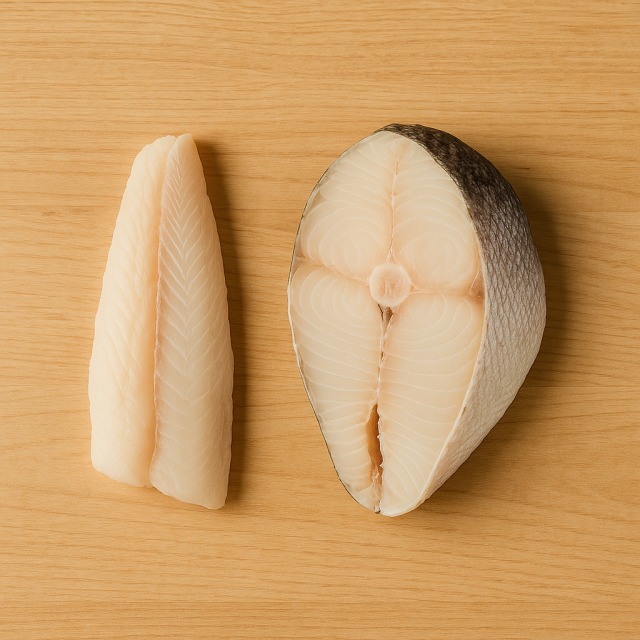
Coley and hake - 100g
Calories 84 kcal
Proteins 17.5 g
Lipids 1.5 g
Carbohydrates 0 g
Coley and hake are lean white fish that supply only about 84 calories per 100 g, classifying them as low-calorie protein sources ideal for weight-management diets. Despite their modest calories, they deliver roughly 17 g of high-quality proteins that contain the full range of essential amino acids.
Both species provide noteworthy amounts of vitamin B12 (supporting red-blood-cell formation and neurological function), niacin, and vitamin B6 for energy metabolism, as well as minerals such as selenium (antioxidant defense), phosphorus (bone health), and iodine, which is vital for thyroid hormone production. While their fat content is limited (≈1.5 g/100 g), the little fat present includes omega-3 DHA and EPA, beneficial for cardiovascular health—though in lower concentrations than fatty fish like salmon.
An interesting fact: Coley is often marketed as "saithe" or "coalfish" in Northern Europe, whereas hake has been a staple in Mediterranean cuisine since antiquity. Their firm yet flaky flesh makes them versatile and easy to cook without adding many calories.
Tips for incorporating coley and hake into a balanced diet
Because coley and hake are naturally low in calories, the cooking method makes a real difference. For a light main course, oven-bake fillets with a drizzle of olive oil, fresh herbs, and slices of lemon; serve with steamed broccoli and a scoop of brown rice to create a balanced plate rich in fiber and micronutrients without excessive calories.
Looking for heartier flavors while still keeping calories under control? Prepare a Mediterranean fish stew by simmering coley or hake with tomatoes, bell pepper, a dash of soy sauce, and herbs—similar to a light version of fish soup. Another idea is to replace the usual fried fish in tacos with grilled coley; top with a salsa of avocado and cucumber for healthy fats and crunch.
Just like cod, these fillets pair perfectly with a classic beurre blanc sauce if you need a richer option—simply control the portion to keep calories in check. Whichever recipe you choose, prioritize steaming, grilling, or baking to preserve the delicate flavor without unnecessary calories.
Frequently Asked Questions
- How many calories are in coley and hake?
- There are about 84 kcal per 100 g.
- Are coley and hake good sources of protein?
- Yes. With roughly 17.5 g of protein for only 84 calories, they offer an excellent calorie-to-protein ratio.
- How can I cook coley or hake without adding too many calories?
- Opt for steaming, poaching, or baking with herbs and a squeeze of lemon rather than frying. These techniques preserve flavor while keeping calories low.
- Do coley and hake contain omega-3 fatty acids?
- They do supply some EPA and DHA, but in smaller amounts than oily fish such as salmon. Still, they improve variety without inflating calories.
- Can I freeze coley and hake without nutrient loss?
- Freezing is safe; proteins and minerals remain stable, and calories stay unchanged. Thaw slowly in the refrigerator for the best texture.
- Are coley and hake safe to eat during pregnancy?
- Both fish are low in mercury and, when thoroughly cooked, are generally considered safe for pregnant women—offering valuable iodine and proteins with limited calories.
Similar foods
Information provided by Calorie Menu may contain inaccuracies or errors. It cannot, under any circumstances, substitute medical advice or medication.
